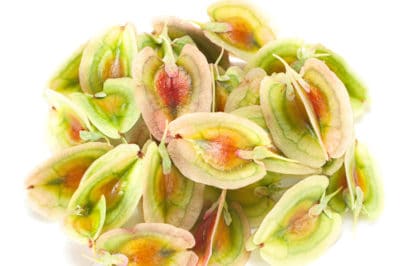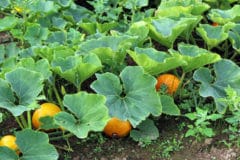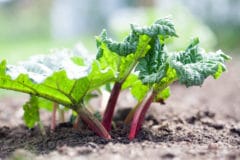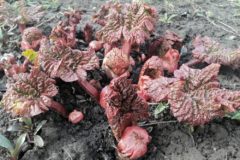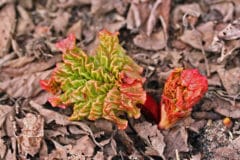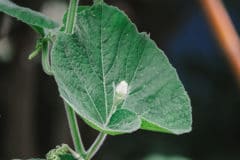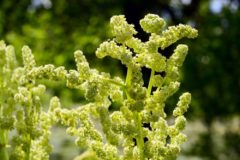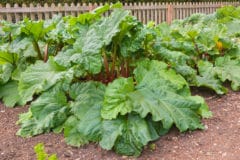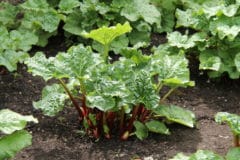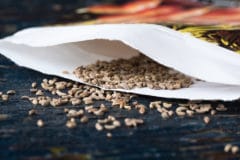Things To Know Before Planting
Rhubarb needs plenty of nutrition, so compost or manure is important. A cool weather plant, rhubarb should be planted in a shady spot, preferably facing north or east.
Starting Your Seeds
Start by soaking the rhubarb seeds in water for a couple of hours. After that, you’ll handle them like most other seeds.
- For a perennial plant, start your seeds eight to ten weeks prior to your region’s expected first frost.
- For an annual plant, start your seedlings from the end of August to the first weeks of October.
- Fill your two or three inch pot with compost or other organic growing medium. You can use peat pots if you prefer.
- Plant two seeds in each pot.
- Germination is quicker if seeds are kept warm, so consider using a heat lamp or other warming device.
- Seedlings should be kept moist, but don’t over water.
Know When It’s Time To Transplant
Seedlings should be about four inches tall before being put into the ground. When you plant them depends on your goal for your rhubarb.
If your intention is to have an annual plant, then your seedlings should be transplanted when they reach their four inch height. For a perennial plant, seedlings need to go into the ground about two weeks before you expect your last frost.
Transplant Preparation
Ensure that your soil is well fertilized and prepared to nourish your seedlings. Work some compost, rotted manure, or organic fertilizer into the soil. You’ll want a straw/manure mix on hand to mulch over the area once your seedlings are in the ground.
If your plants have not been hardened off prior to transplantation, have a cover of some sort available to protect them from frost.
If your transplant area is in a very sunny place, or if it faces south or west, you’ll want to offer your seedlings a shady protection from the heat.
Continued Maintenance Is Important
As the weather warms, keep an eye on the moisture content of your soil. Rhubarb should be kept moist as it grows; allowing it to dry out will likely result in dead plants.
You will also need to periodically add compost or manure to the mulch you’ve laid out over your rhubarb patch.
After your plants have put down roots and started growing in your garden, simply keep them fed, watered, protected from insects, frost, and heat, and you’ll soon be enjoying your rhubarb in all kinds of dishes.
